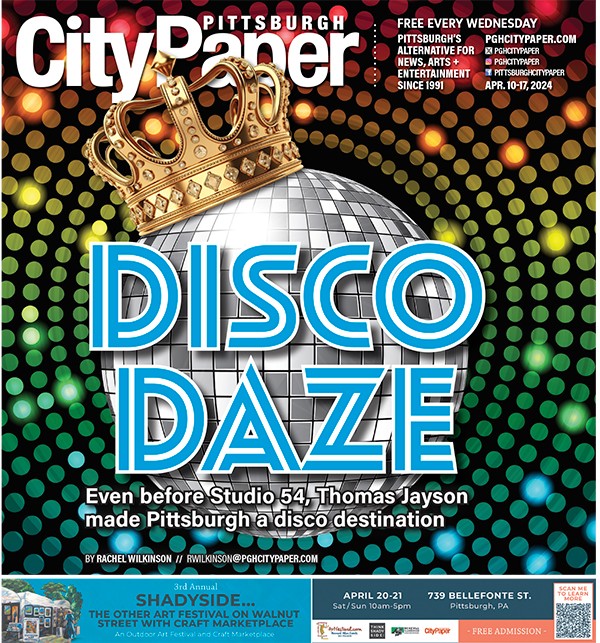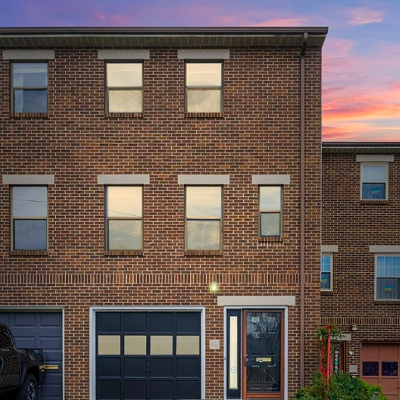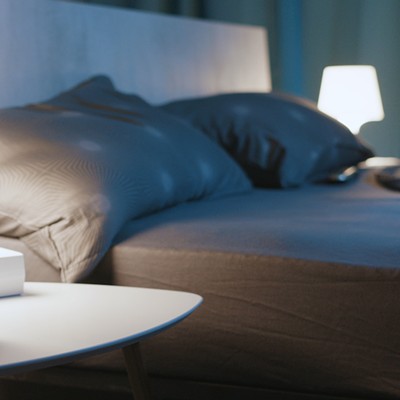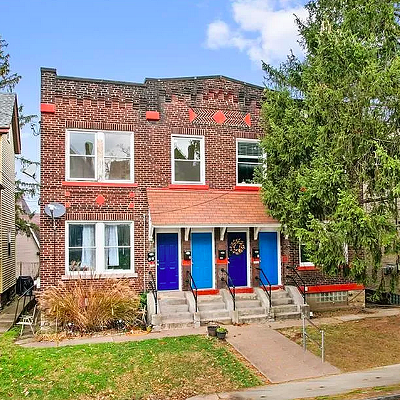I'm going to go out on a limb and guess you are something less than 90 years old: City Paper appeals to Pittsburgh's sprier set, after all.
If that's true, the Nixon you remember was probably a somewhat squat structure along Liberty Avenue. The one you have a photograph of, I suspect, was located along Sixth -- an ornate Beaux Arts structure, crowned by a large dome.
The Nixon Theatre in your photograph opened in 1902, and was arguably the most opulent theater Pittsburgh ever had. As S. Trevor Hadly eulogizes in his book Only in Pittsburgh, the interior "was in the Louis XVth style." And if it's one thing those French monarchs had, it was restraint: "Inside were massive imitation Parawazza marble columns capped with solid gold. ... The side walls were paneled to look like damask silk ... framed in a molding and styling of green, gold, and red. Velvet and silk draperies added profusely to the décor." So imagine Heinz Hall, only slightly less austere.
Productions in the theater, Hadley writes, were equally lavish: A 1905 production of Ben Hur, for example, used four horse-drawn chariots; a production called Garden of Allah "called for a herd of camels, horses, and goats and 50 camel drivers." (And people say Americans aren't interested in Muslim culture ...)
Eventually, though, the Nixon fell victim to what city officials saw as a pressing need Downtown: more office space. In 1950, the theater was sold to Alcoa, which replaced the Nixon with a headquarters building facing Mellon Square Park.
Not everyone took well to the change. "I'm infuriated," Katherine Hepburn wrote the city, with characteristic moderation. "The new skyscraper will be just another building -- maybe fascinating, but not glamorous."
Maybe not really fascinating either. What we got was an aluminum-skinned structure even Alcoa got bored with. The building is now the "Regional Enterprise Tower"; its offices are staffed with local redevelopment groups and non-profits. For those still interested in theater, the city's financial oversight board meets periodically on the building's top floor. There, board members demonstrate the ritualized grimaces of Japanese theater whenever the city proposes new spending.
At any rate, the Nixon name was transplanted a block away, to the theater you probably remember, a more modest structure at 956 Liberty. Built in 1914, this second theater had been known by various names: the Victoria, the Shubert, the Senator. But it picked up the Nixon name, and picked up where the Nixon left off: The new Nixon was soon hosting national shows with top-tier talent including Henry Fonda, Olivia de Havilland and Audrey Hepburn.
But already Downtown was changing, turning sordid. By the 1970s, Liberty Avenue was overcome with massage parlors and theaters that showed the kind of movie you wouldn't want to see Henry Fonda in, at least not in his On Golden Pond days. The Nixon shut down in 1976, prompting theater manager Leo Carlin to complain to the Pittsburgh Press, "People say we died because we're up here on Liberty Avenue, but that's just an excuse. If you get the good people up here the bad ones will go away."
That became the mantra for just about every attempt to save Downtown for the next 30 years. But it was no help to the Nixon, which remained vacant for decades afterwards.
Up until recently, you could still see traces of the old theater. Facing toward Liberty Avenue, the building's spine was once decked out with a series of five blue-and-white metal panels that spelled out the "Nixon" name.
That's all gone now, along with a cluster of buildings wedged between Liberty and William Penn Way. Until a few months ago, that parcel of land contained a local strip club -- where the youths of many other CP readers were no doubt spent -- a bar, the long-vacant Nixon Hotel, and a place serving Pittsburgh's thriving sea-sponge market.
As I write this, however, all of those buildings are being torn down to make way for the new African-American Cultural Center.










